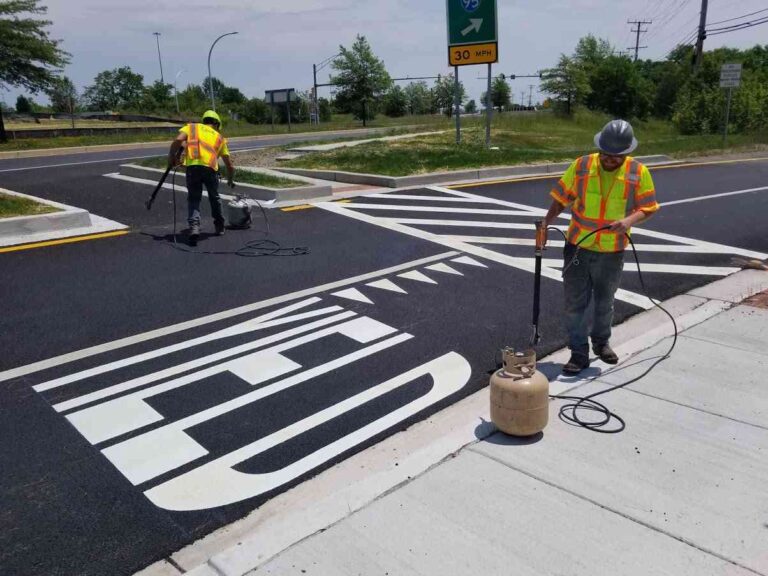If you’ve ever driven into a freshly surfaced car park or crossed a bright new pedestrian walkway, you’ve already seen one of the quiet innovations transforming modern cities’ thermoplastic line marking tape.
While it may not sound glamorous, this material has become essential for contractors and councils looking to improve road safety, durability, and sustainability.
Across the UK, thermoplastic markings are being used everywhere from logistics yards and retail car parks to schools and high streets as a smarter alternative to traditional road paint.
Why Thermoplastic Is Replacing Road Paint
Traditional road marking paint is inexpensive, but it rarely lasts.
Heavy traffic, rain, frost, and UV exposure can quickly wear it away, leading to faded lines and safety concerns.
Thermoplastic markings, however, are applied as a heat-bonded layer that melts into the surface, creating a coating that can withstand years of wear and tear.
They also incorporate glass beads for reflectivity, keeping markings bright and visible at night or during poor weather conditions.
The result? Longer-lasting safety markings that reduce maintenance cycles and costs for local authorities and private property owners alike.
Durability That Supports Sustainability
Durability isn’t just about convenience; it’s about environmental responsibility.
Every time markings have to be repainted, more materials and fuel are used, and more emissions are released.
By lasting several times longer than paint, thermoplastic materials significantly cut down on waste and carbon footprint.
Modern thermoplastic compounds are also lead-free, non-toxic, and compliant with environmental standards, making them a responsible choice for sustainable infrastructure projects.
When used across entire towns or business parks, these small efficiencies add up to real environmental impact.
Faster Application, Less Disruption
For contractors, one of the main advantages of thermoplastic systems is speed.
With pre-formed shapes and tapes, installation is quick, clean, and efficient.
Surfaces can often be reopened to traffic within minutes.
That means fewer closures, reduced downtime, and minimal inconvenience, a major win for public spaces, retail areas, and housing developments where accessibility is key.
Professional-grade options like thermoplastic line marking tape are available in rolls, symbols, and custom patterns, making it simple to achieve crisp, compliant markings with minimal effort.
Practical Uses Around Homes and Businesses
Thermoplastic markings aren’t just for highways they’re also being used for private applications:
- Driveway safety markings and visibility lines.
- Warehouse and logistics zones, ensuring safer routes for vehicles and pedestrians.
- School playground markings for both safety and games.
- Car park layouts for commercial and residential complexes.
These uses show how adaptable the material is and why it’s fast becoming the standard across multiple sectors.
The Bigger Picture: Safety and Longevity
At its core, thermoplastic technology represents a simple but powerful idea that everyday infrastructure can be built to last longer, perform better, and support sustainability.
For cities, homeowners, and contractors, the move toward thermoplastic markings is part of a broader evolution in construction materials: one that values lifecycle efficiency over short-term fixes.
It’s a reminder that the best innovations often work quietly in the background, making the spaces we use every day just a little bit safer.
Final Thought
In an age where sustainability and efficiency are guiding nearly every home and infrastructure decision, thermoplastic line marking tape has earned its place as one of the most practical and future-focused materials in use today.
From car parks to cycle paths, it’s proving that even the simplest innovations can have a lasting impact.



